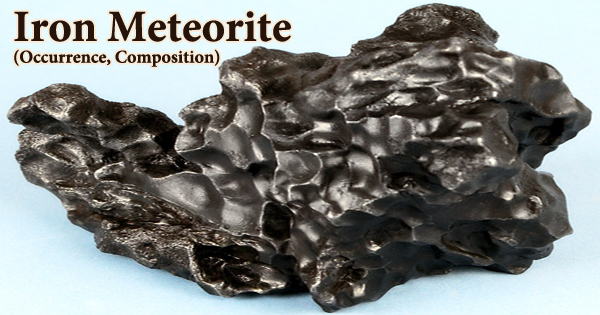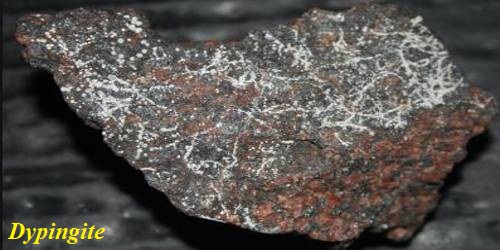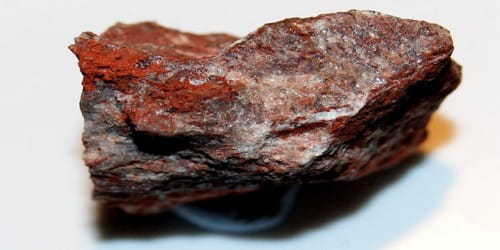As they descend, melting, through our planet’s atmosphere, iron meteorites are thick, heavy, and frequently fashioned into odd or even stunning patterns. Siderites, also known as ferrous meteorites, are a kind of meteorite composed mostly of an iron-nickel alloy known as meteoric iron, which typically consists of two mineral phases: kamacite and taenite. They come from the cores of asteroids and makeup roughly 5% of all meteorites on the planet.
With the exception of the IIE iron meteorite group, most iron meteorites come from planetesimal cores. When such meteorites, commonly referred to as irons, descend through the atmosphere, they may develop a thin, black coating of iron oxide, which soon rusts. 5–10 percent nickel, ~0.5 percent cobalt, 0.1–0.5 percent phosphorus, 0.1–1 percent sulfur, and over 20 additional elements in tiny levels are found in a typical iron meteorite. A small percentage of iron meteorites include silicate inclusions, which, due to their buoyancy, should have easily separated from molten metal. They give crucial evidence for molten or partially molten planetesimals colliding.
Due to the malleability and ductility of meteoric iron, it was one of the earliest sources of useable iron available to humanity before the invention of smelting, which heralded the beginning of the Iron Age. A few iron meteorites, on the other hand, were most likely produced by impact melting of chondritic material. When planetesimals were molten, impact mechanisms were also significant in the formation of numerous iron meteorites.

Iron meteorites are found more frequently than stony or stony iron meteorites, despite accounting for only about 5% of observed meteorite falls. They are relatively easy to distinguish from terrestrial rock and last longer in soil than stony meteorites, so they are found more frequently than stony or stony iron meteorites. Most iron meteorites may be classified into 14 categories based on chemical analysis: around 15% appear to derive from another 50 or more poorly studied parent bodies. Iron meteorites have historically been over-represented in meteorite collections, despite being relatively rare compared to stony meteorites, accounting for just around 5.7 percent of observed falls.
Iron meteorites are thought to have originated in the Asteroid Belt between Mars and Jupiter, where they were originally part of the core of a long-gone planet or massive asteroid. Because of their hefty mineral makeup (iron and nickel), they can frequently withstand the hard descent through Earth’s atmosphere without splitting into smaller pieces. Chemical differences in all but three groups are compatible with planetesimal molten core fractional crystallization.
The iron concentration of most specimens in this group ranges from 90 to 95 percent, with nickel and trace metals accounting for the remainder. In contrast to stony meteorites, they are immediately recognized as odd even by laypeople. Modern meteorite searches in deserts and Antarctica provide a far more representative sample of meteorites. The chemical composition and structure of iron meteorites are used to classify them. The two component iron-nickel alloys kamacite and taenite are used to establish structural grades.
They have a higher chance of surviving atmospheric entry and resisting ablation as a result. As a result, they’re more likely to be discovered in huge chunks. The Widmanstätten Pattern, named after Count Alois von Beckh Widmanstätten, who first reported the phenomena in the 19th century, is a complex interconnecting crystalline pattern formed by these alloys. Due to their metallic nature, they may be discovered even when buried using surface metal detecting equipment. The Hoba meteorite, discovered in Namibia, is the world’s biggest meteorite.
Because both have comparable spectral properties in the visible and near-infrared, iron meteorites have been connected to M-type asteroids. Iron meteorites are considered to be broken core pieces of bigger ancient asteroids destroyed by collisions. Iron meteorites’ formation ages and provenance may be determined via isotopic analyses. This suggests that the asteroid belt previously had at least as many massive, distinct asteroids as it does now.
A “fine octahedrite” is an iron with very narrow bands (less than 1 mm) while “coarse octahedrites” are ones with broad bands. The FeNi-alloys kamacite and taenite make up the vast majority of these meteorites. Minor minerals produce circular nodules of troilite or graphite surrounded by schreibersite and cohenite when they exist. Iron meteorites’ parent bodies appear to have originated before those of chondrites, according to isotopic dating, and certain irons appear to be the earliest known meteorites.
The elements Fe, Ni, and Co dominate the chemical makeup, accounting for more than 95% of the total. Their surprising age is compatible with planetesimal Al heating. Bodies formed more than 2 million years after the first known solids (refractory inclusions in chondrites) should not have had enough Al to melt. In the field, a large proportion of nickel can be used to identify meteoritic irons from man-made iron products, which typically include smaller levels of Ni, although this is insufficient to confirm meteoritic origin.
Iron meteorites have long been prized for its meteoric iron, which has been fashioned into cultural artifacts, tools, and weaponry. Although iron meteorites are made up of asteroids, isotopic anomalies in some of them indicate that they came from planetesimals that did not originate in the asteroid belt. Iron was as precious as gold in Ancient Egypt and other civilizations before the Iron Age, because both originated from meteorites, such as Tutankhamun’s meteoric iron knife.
Information Sources:
















